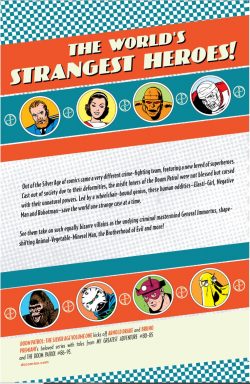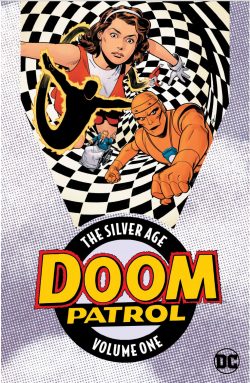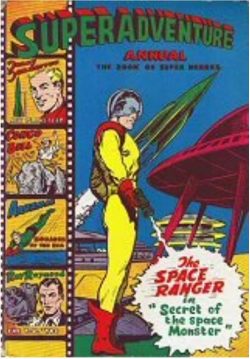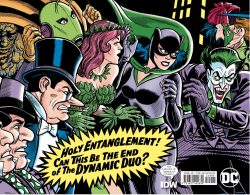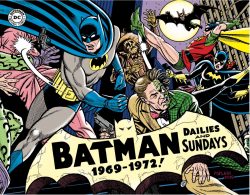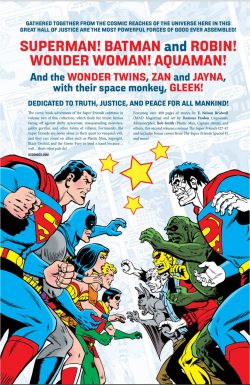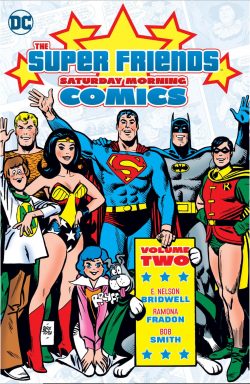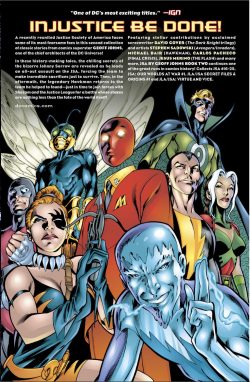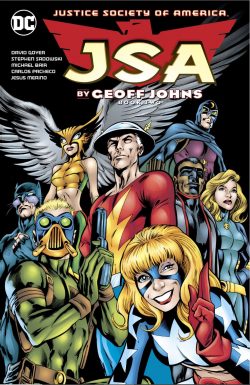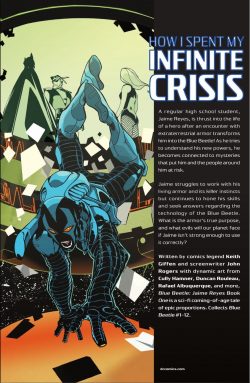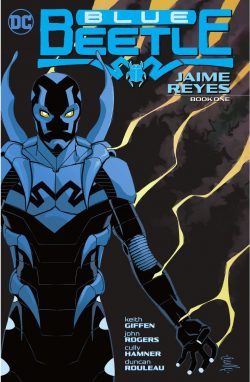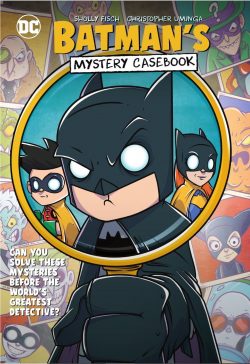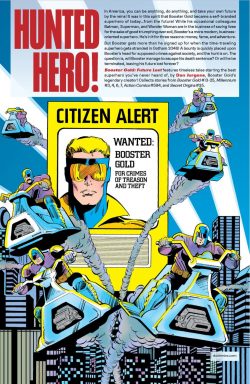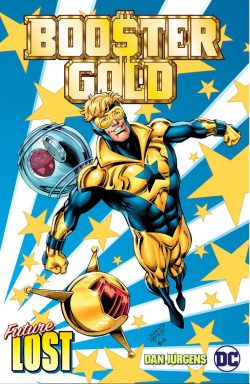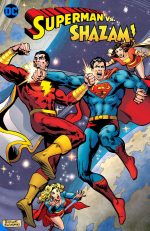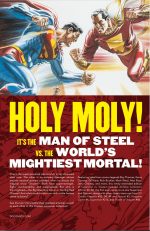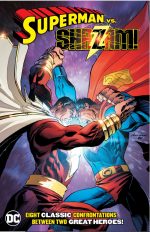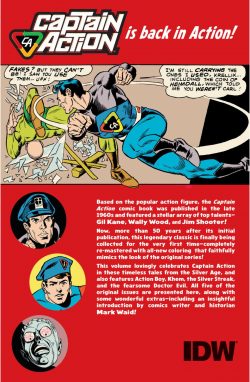
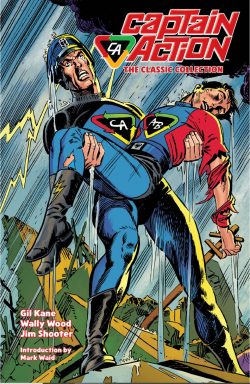
By Gil Kane, Wally Wood, Jim Shooter & various (IDW)
ISBN: 978-1- (TPB) eISBN: 978-1-64936-046-5
These days comics are about kids of varying ages looking back. So too are toys, and baby boomers like me are particularly prone to the fabled golden age and certain “must-have” items – whether we ever actually owned them or not. An added bonus comes if those toys made it to comics and vice versa…
Back then, the ultimate acme for so many of us in the UK was – no, not the Johnny Seven multi-gun, or Man from U.N.C.L.E. briefcase – but the Captain Action nine-heroes-in-1 doll (sorry, Action Figure)…
Once upon a time comics were considered the nigh-exlusive domain of children, with many scrupulously-policed genres and subdivisions catering to particular and stratified arenas such as fact, fantasy, adventure and humour. They were even further codified by age and gender.
A particular and popular recurring theme was tapping into the guaranteed and hopefully mutual sales boost offered by licensing and cross-marketing. West Coast outfit Dell/Gold Key had early on specialised in out-industry licensing deals and adaptations…
Many titles depended on a media celebrity like Howdy Doody, Charlie Chaplin or Mickey Mouse and in America that eventually spread to the marketing of products also aimed at kids… such as sweets, cartoons and toys…
By the end of that era, comics for kids were almost exclusively released as a minor strand of a major maketing strategy. That comics like Thundercats, Micronauts, Transformers, Rom and G.I. Joe were actually good and entertaining on strictly strip terms was a happy coincidence and thanks solely to the diligent pride and efforts of the creators involved. Sadly, it also led to publishers intensifying efforts to add a toy component to their own properties. Hands up anyone out there who owns a Spider-mobile, Batboat or Supermobile…
For DC, that trend really began in 1968. Although the company – known as National Periodical Publications back then – had long benefitted from creating comics adventures of movie stars like Bob Hope, Jerry Lewis or Dale Evans and shows such as Gang Busters, A Date with Judy and Mr. District Attorney, they had stayed away from the toy biz – unless you count two issues of Showcase (#53 & 54 Novenber/December 1964 and January/February 1965) that unofficially tied-in to Hasbro’s release of the first G.I. Joe line.
Then, just as costumed superheroes boomed, peaked and began an inexorable die-back, an old connection resurfaced…
In 1964 inventor and promotions wizard Stan Weston devised a way to sell dolls to boys: a dilemma that had stumped toymakers for centuries. He devised an articulated mannequin that would represent all branches of the military and could be aurmented by add-on uniforms and equipment. He called it an “action-figure” and sold the notion to Hasbro, who marketed it with great and lasting success as G.I. Joe (in Britain it was rebranded Action Man).
With his remuneration, Weston – whose promotions company Leisure Concepts had secured representation rights to DC, Marvel and King Features characters – devised a similar boys toy figure designed to ride the then-current global superhero wave triggered by the Batman TV show. “Captain Magic” was not only a superhero in his own right but could also transform into other superheroes via costumes and masks purchased seperately…
Released in waves, these alter egos included Superman, Batman, Aquaman, Spider-Man, Captain America, Sgt. Fury, The Phantom, 2 different Lone Rangers, Tonto, Steve Canyon, Flash Gordon, Buck Rogers and the Green Hornet.
Weston sold this concept to Hasbro’s rival Ideal Toy Company who went all-out in producing and marketing the range. It launched in 1966, redesignated Captain Action…
A huge success, an expansion line in 1967 introduced a kid sidekick, pet panther, villains, an Action-Cave, secret lairs, a super car and lots of other paraphenalia. Latterly, distaff partner Lady Action was joined by doll versions (“Super Queens”) of Wonder Woman, Mera, Supergirl and Batgirl…
The line was an early casualty of the downturn in superheroes and discontinued in 1968. It has, however, cemented itself in popular memory, with the core character returning on many occasions. He now enjoys a new marketing company seeking to rebuild the brand, Since 2005, Catain Action Enterprises have been testing the waters and some of their efforts can bee seen as ads and addenda throughout the book…
However, back at the height if the craze that DC link led to Editor in Chief Mort Weisinger commissioning a comic book tie-in. It turned out to be one of the most lovely, powerful, experimental and maturely sophisticated titles of the era and – finally – all the legal loopholes have been circumvented so you can see it at last …or if you’re truly blessed, once again…
Weisinger tapped his youngest writer – teenager Jim Shooter – and teamed him with veterans on the potentially colossal project. Miracle-working editor Julie Schwartz was in charge, and Wally Wood started the ball rolling artistically, but the real revelation came after replacement penciller Gil Kane took over the writing…
Born Eli Katz and a pre-WWII infant immigrant from Latvia, Kane was one of the pivotal players in the development of the American comics industry, and indeed of the art form itself. Working as an artist, and an increasingly more effective and influential one, he drew for many companies from the 1940s onwards, tackling superheroes, crime, action, war, mystery, romance, animal heroes (Streak and Rex the Wonder Dog!), movie adaptations and, most importantly perhaps, Westerns and Science Fiction tales.
In the late 1950s he became one of Schwartz’s key artists in regenerating and rebooting the superhero concept. Yet by 1968, at the top of his profession, this relentlessly revolutionary and creative man felt so confined by the juvenile strictures of the industry that he struck out on bold new ventures that jettisoned the editorial and format bondage of comic books for new visions and media.
His Name Is Savage was an adult-oriented black & white magazine about a cold and ruthless super-spy in the James Bond/Matt Helm/Man Called Flint mould; co-written by friend and collaborator Archie Goodwin. It was very much a precursor in tone, treatment and subject matter of many of today’s adventure titles.
His other venture, Blackmark (1971, and also with Goodwin), not only ushered in the comic book age of Sword and Sorcery, but also became one of medium’s first Graphic Novels. Technically, as the series was commissioned by fantasy publisher Ballantine as eight volumes, it was also envisioned as America’s first comic Limited Series.
Before them, though, there was Captain Action…
Edited by Schwartz with covers by Irv Novick, Wood, Kane & Dick Giordano, the entire DC run is collected here, preceded by a fulsome and informative Introduction from Mark Waid.
Unable to play with the toy’s major attraction – multiple super-personalities – Shooter & Wood instead went with classical drama for issue #1’s ‘Origin of Captain Action!’: revealing how archaeologist Clive Arno and his assistant Krellik uncover a chest of coins left in antiquity by incredible superbeings remembered by humanity as gods.
These coins allow the holder to access the incredible powers of countless deities, but the temptation proves too much for the scheming assistant.
However, when he tries to steal them, an ancient failsafe painfully prevents him…
Driven away, the scoundrel is then found by the coin vindictively created by primal God of Evil Chernobog: one which imparts astounding magical abilities and feeds his hatred. As Arno designs a costumed identity to help the world via the coins, Krellik spies on and steals his thunder, resolved to taint the project before it even begins…
Returning to America, Arno learns ‘Where the Action is’ from his son Carl, as Krellik plunders museums dressed in Arno’s proposed uniform. A swift chase then results in a cataclysmic clash and brief cameo by Superman…
Trailing his enemy, the true Captain cannot stop Krellik obtaining more deadly artefacts of the lost gods. As the first issue ends he is savagely beaten and apparently defeated before he’s even started …
With Kane pencilling Shooter’s script and Wood inking, the saga concludes in #2 as ‘The Battle Begins!’ with the victorious villain repeatedly failing to appropriate the power coins: stymied by the remarkably astute and valiant Action Boy. When Krellik’s frustration boils over and he starts wrecking the city, our recently returned hero goes all out and at last overcomes in ‘Captain Action’s Reactions!’ Kane was eager to stretch his creative muscles in a period of great change and challenge and Schwartz was happy to oblige…
Although already distressingly high in drama and calamity, the series went into overdrive with #3 as the toy company’s preferred archfoe debuted. A blue skinned humanoid with an exposed brain. Dr Evil was fleshed out as Kane wrote and pencilled ‘…And Evil This Way Comes!’, revealing how a catastrophic earthquake in San Francisco caused hundreds of deaths and triggered an evolutionary aberration in the laboratory of Dr. Stefan Tracy…
The Nobel Laureate was also Arno’s father-in-law and both were united in grief over the death of his daughter (and Arno’s wife) Kathryn. They also shared an abiding love for Carl Arno.
All that seemed over when Tracy was elevated to the status of a futureman resolved to similarly improve mankind, no matter how many perished in the process…
The most telling consequence of the quake is the loss of all but a handful of power coins. Action Boy is given the superspeed inducing Mercury artefact, whilst his dad keeps the tokens of Zeus, Hercules and Heimdall (rationalising why the Captain needs cool tools like his supercar the Silver Streak), and they deploy to save lives in the aftershocks.
They are hindered and countered by Tracy/Dr. Evil: using his devices to amplify the natural disaster. His deed almost kills his grandson, until a fast-fading final shred of humanity hampers his deeds and hold back his damning hand…
The act is his last as a human being and allows the Captain a desperate chance to drive him away…
From this issue on a letters page – Action Line – was included, and they are reprinted from here on.
Kane went even more deeply into mature themes with #4 as ‘Evil at Dead World’s End!’, sees the hyper-evolved savant drawn across the universe to a dying planet peopled with beings just like him. Well, not quite: these beings are at the end of existence on a dying planet, worn out by eons and resolutely awaiting death. Dr. Evil refuses to let them go, inspiring their brief rejection of well-earned rest with the promise of a fresh young world: Earth. To offset his son-in-law’s interference, the mind master distracts the hero with a trio of rampaging monsters and cruel resurrection of dead Kathryn. The alluring spectre then implores her husband to forsake life and join her in the beyond…
The high impact dramas were far from what any kid might expect, and the series closed on an even more shocking premise as ‘A Mind Divided’ revealed a nation torn apart by a racist demagogue inciting insurrection and racial purity: a campaign polarising America’s youth and encapsulated in a single father’s descent into madness. Captain Action might be able to rescue victims, stop bombers, break up riots and beat uniformed thugs but saving a twisted soul from self-inflicted tragedy was beyond even the reach of gods…
Now, rush out and buy the Captain Action Parachute Mortar, kids…
The comics material closes with text and letters page Action Line and a reader competition – ‘The Two Faces of Dr. Evil’ – before even more avarice-inspiring found-features fill out the Captain Action Gallery.
The comics stories preceding this section were packed with ads for old and new Cap merch in the gaps originally filled by DC comics releases (some contemporarily crafted by Michael Polis) for dolls/action figures, toys, accessories, costumes, “Captain Action Action Facts!”, card & board games, choco bars, breakfast cereal, freezer pops and vintage comic book house ads and TV promos for the franchise.
Here however are full-page delights such as paintings of Captain Action; toy ads from the comics for Action Boy, Dr. Evil. Lady Action and pages from the Captain Action Yellow Book by Murphy Anderson, Kurt Schaffenberger, & Chic Stone, plus astondingly lovely original art pages and pencil art by Kane & Wood.
Although Captain Action couldn’t sustain a readership or toy-buying clientele, DC would dabble again and again with related topics (like Alex Toth & Neal Adams’s sublime Hot Wheels comic in 1970, MASK, Masters of the Universe, and DC in-house properties Mego Superheroes and Kenner’s Super Powers action figures) and publishing properities now make a large paart of every successful comics company…
The 1960s was the era when all the assorted facets of “cool-for-kids” finally started to coalesce into a comprehensive assault on our minds and our parents’ pockets. TV, movies, comics, bubble-gum cards and toys all began concertedly feeding off each other, building a unified and combined fantasy-land no kid could resist. That nostalgic force has never been more wonderfully expressed than in the stories in this book and you would be mad to miss it.
Captain Action: Classic Collection © & ™ 2022 Captain Action Enterprises, LLC. All rights reserved.

